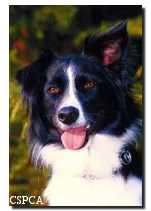 |
|
|
Back To Top Back To Top Back To Top |
|
Stray Dogs The Control Of Dogs Act came into force in April 1987 obliging local authorities to control and impound stray dogs and giving them power to issue licences, appoint wardens, provide shelters for stray and other dogs, to seize dogs, to impose on-the-spot fines and to take court prosecutions. It also states that after allowing 5 days for an owner to reclaim them the local authority can either put them to sleep or re-home them. The CSPCA has been re-homing dogs voluntarily since 1870 and has a premises in the city centre and so the Cork City Council (then Cork Corporation) entered into an agreement with us for the city dog warden to link up with us. This arrangement gives us the fortunate position of being able to keep dogs much longer than the statutory five days the county pounds can offer and most healthy dogs are either reclaimed, found suitable homes or passed on to other animal welfare groups for re-homing. The number of dogs in this country is estimated to be between 500,000 and 700,000. However the number of licenses issued is approx 185,000, an overall licensing level of between 25% and 36%. In Cork City last year 2500 licences were purchased, about 25% of the number of dogs in the City. The cost of a licence is €12.70. The County Council operates its own Dog Control Scheme and employs 15 wardens throughout the County. Here in the City of Cork we have just one dog warden which is not sufficient but if more licenses were bought the money would be put back into the scheme and another warden could be employed to help with the stray dog situation. Unfortunately, there are occasions that an animal has to be put to sleep while in the shelter, for example when it has a painful and incurable condition, it is too old to re-home or when all avenues have been exhausted and no-one wants to adopt it. On every occasion is done by a qualified veterinary surgeon, using an intravenous injection. The cost to the Society is high but we feel that this is the most humane approach. The Society hopes that one day no healthy animal that comes into the shelter will have to be put to sleep. Only with the help and cooperation of all citizens will we achieve this goal. A new low-cost neutering and spaying scheme is something we would like to introduce when our funds allow this. We feel that this is a crucial step in controlling the very large number of unwanted dogs and cats.  To About Us Section To About Us Section |
|
|
|